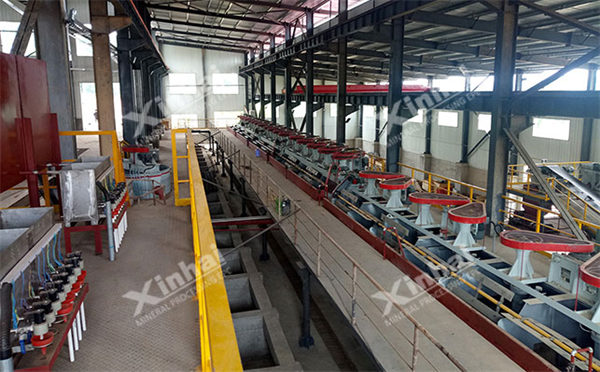The treatment process of low sulfur lead-zinc ore generally includes processes such as ore pretreatment, flotation, concentrate processing, and tailings treatment. The following are some commonly used treatment processes for low sulfur lead-zinc ores:
Oxidative roasting: Low sulfur lead-zinc ore is oxidized and roasted to convert sulfides into oxides, thereby reducing the impact of sulfides on flotation efficiency. However, oxidation roasting generally requires high temperature and energy consumption, and will generate a large amount of sulfur dioxide gas, causing pollution to the environment.
Pickling: Low sulfur lead-zinc ore is pickled to remove surface oxide scale and impurities, thereby improving the recovery rate and grade of lead and zinc.

Flotation: The flotation method is used to beneficiate low sulfur lead-zinc ore. In the flotation process, reagents such as xanthate, pyruvic acid, and eicosapentaenoic acid are generally used for regulation to improve the recovery rate and grade of lead and zinc.
Concentrate processing: Process the lead zinc concentrate obtained from flotation, including refining, copper removal, lead removal, and other processes to improve the purity and quality of lead and zinc.
Tailings treatment: Subsequent treatment of flotation tailings, including concentration, drying, and stacking, is carried out to reduce the impact of tailings on the environment.
The above are commonly used low sulfur lead-zinc ore treatment processes, and different ore properties and beneficiation processes may use different treatment processes. In actual production, it is necessary to select treatment processes and reagents reasonably based on the properties of the ore and the requirements of beneficiation, in order to improve the recovery rate and grade of lead and zinc, while reducing the impact on the environment.